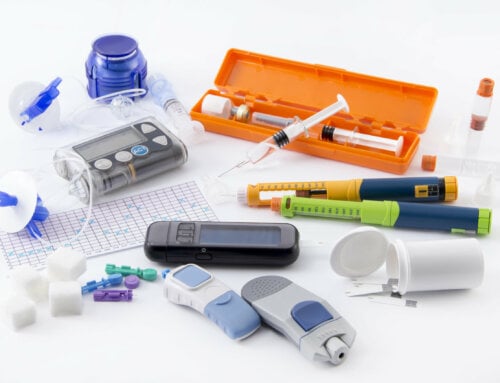Many people who develop type 2 diabetes have pre-diabetes first. Blood glucose levels are higher than normal with pre-diabetes but not high enough to be considered diabetes. Making positive lifestyle changes with pre-diabetes can prevent or delay getting type 2 diabetes.
- Symptoms of pre-diabetes may include thirst; blurry vision; tingling or numbness in the feet or hands; frequent urination; recurring bladder, gum or skin infections; bruises and cuts that are slow to heal; and extreme fatigue. If you experience any of these symptoms, talk to your doctor about pre-diabetes testing. Many times there are no symptoms at all. Blood testing may hold the answer.
- Three tests are done by a medical professional to determine if you have pre-diabetes. They may include the A1C test, the oral glucose tolerance test (OGTT) or the fasting plasma glucose test (FPG). If your blood glucose level is abnormal after testing, you have pre-diabetes.
- On the A1C test, pre-diabetes is considered between 5.7 and 6.4 percent and diabetes occurs at 6.5 percent or higher. The OGTT test, pre-diabetes is between 140 mg/dl and 199 mg/dl with diabetes over 200 mg/dl. The FPG test, pre-diabetes is between 100 mg/dl and 125 mg/dl and a diagnosis of diabetes is 126 ml/dl two separate times within a few weeks. Your doctor will review your test results.
- Pre-diabetes and diabetes happens to people of all races and ages but some groups are at a higher risk. Diabetes is more common for the aged population, African Americans, Native Americans, Latinos and Asian Americans/Pacific Islanders. Family history and certain health conditions can increase your risk including gestational diabetes during pregnancy, high blood pressure and high cholesterol.
- Another risk factor for developing pre-diabetes is being overweight with a high BMI. Losing 7 percent of your body weight, or 15 pounds if you weigh 200 pounds, can lower your risk of developing type 2 diabetes. Getting proper sleep every night also helps you maintain a healthy weight.
- A lack of physical activity is also a risk factor for developing pre-diabetes. You can lower your risk of developing pre-diabetes with moderate exercise. For example, go for a brisk walk for 30 minutes a day, 5 days a week.
- Visit your doctor regularly if you have pre-diabetes. You are at a 50 percent increased risk for heart disease or stroke. Quit smoking and steer clear of fatty and sugar-laden foods and beverages. Eat a health diet with fruits, vegetables, whole grains and lean proteins.
- Your doctor may advise you to get diabetes supplies to monitor your blood sugar at home, especially before and after meals. Supplies may include a blood glucose monitor and A1C home testing kits. Follow trends of your blood sugar readings. If your blood sugar levels consistently go up, contact your doctor immediately.
The American Diabetes Association reported there are 79 million people with elevated blood sugars. Only 11 percent of these people develop type 2 diabetes within three years. View pre-diabetes as a warning to develop lifestyle changes that help you ward off a diagnosis of diabetes.






Leave A Comment